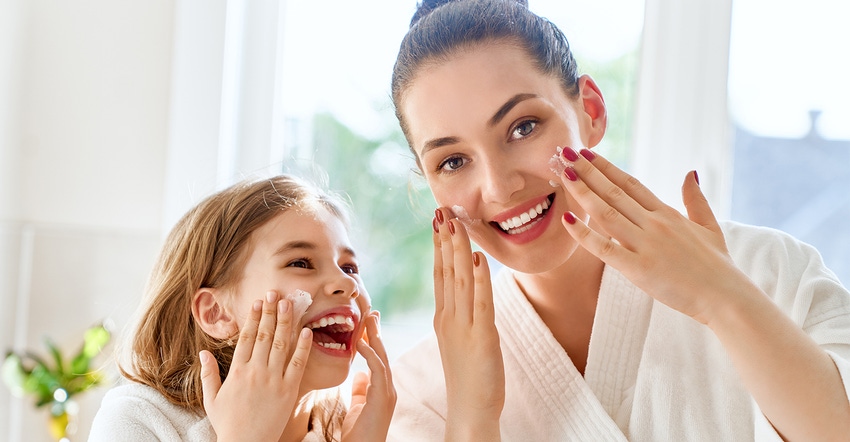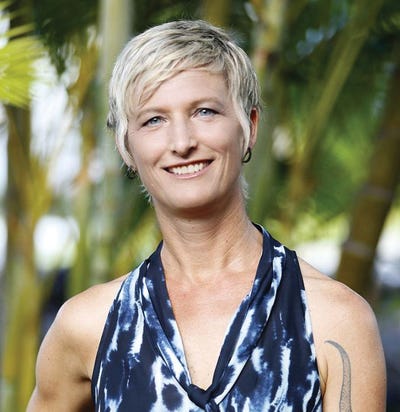Healthy aging—Astaxanthin and youthful skin
Skin aging comes in many forms, but astaxanthin, a free-radical-quenching carotenoid can help replenish skin’s youthful qualities by combating inflammation.

As people age, they experience change, some pleasant like greater wisdom garnered and some not so fun like crow’s feet and sagging skin. People may be vain, and that’s OK. Or they may be proactive with their personal care and appearance. Like the rings of a tree, fine lines can be nurtured and managed with the natural skin care products in the cabinet, a pair of sunglasses to take 10 years off in a photo, or with dietary supplements that support youthful skin.
One such botanical supplement is astaxanthin, a free-radical-quenching carotenoid that can help nourish healthy youthful skin. This antioxidant is derived from Haematococcus pluvialis microalgae and is backed by a great deal of clinical research. It grows in nature and is cultivated by several microalgae companies across the globe.
In nature, green microalgae form cysts when they are exposed to the sun and begin producing the red astaxanthin carotenoid to protect its cells from within. Similarly, astaxanthin supplementation is thought to support the skin from within.
As the skin ages, its elasticity is weakened, leading to sagging. This is caused by oxidation, which can be minimized by the astaxanthin compound’s free radical quenching capability, according to research in Carotenoid Science (2007;11:16-20). The publication noted environmental factors, genetic makeup, nutrition and sun exposure drive oxidation and the cascade effect of free radical formation. Without antioxidant protection of some kind from free radicals skin can age faster, researchers advised.
Two of the recent randomized double-blind placebo-controlled studies in healthy people taking astaxanthin supplements illustrated the carotenoid’s potential to support aspects of healthy aging. One study classified the indications of skin aging through wrinkle depth, degradation of elasticity, and reduction in moisture content (J Clin Biochem Nutr. 2017;61[1]:33-39). Fifty-nine healthy women ranging in age from 35 to 60 years old took a placebo, a 6-mg or a 12-mg astaxanthin soft gel for 16 weeks. The efficacy of oral astaxanthin supplementation on facial skin was assessed via wrinkle depth, moisture content and elasticity.
In the placebo group the mean and maximum depths of the deepest wrinkle significantly deteriorated during the 16-week study. Skin moisture content also displayed significant deterioration in the placebo group at week 16 (204.9+/-54.2 microSeimens [µS], a measure of skin conductance) compared with that at start of the study (264.7+/-100.3 µS). In contrast, significant deteriorations in wrinkle parameters and skin moisture were not observed in either of the groups taking astaxanthin.
Elasticity parameters improved significantly in the group supplementing with 6 mg of astaxanthin after 16 weeks. And the outer layer of skin significantly deteriorated in the placebo group after 16 weeks, while the outer layer of the skin was maintained in the group taking the 12-mg (high-dose) astaxanthin supplement.
The results suggested that astaxanthin may slow down skin aging via its anti-inflammatory effect, because skin aging occurs as a result of cellular metabolism, and skin inflammation triggered by UV exposure, skin dryness and ultimately oxidative stress.
Ultimately astaxanthin can support healthy skin including overall skin appearance, moisture retention, improved skin elasticity and wrinkle depth, according to the study published in the Journal of Clinical Biochemistry and Nutrition. Clinical research supports these benefits when taking an astaxanthin supplement of 4 to 12 mg/day.
Age-related skin deterioration is thus thought to be minimized by the inhibition of oxidative stress and the suppression of inflammatory cytokines. An in-vitro portion of the Journal study was conducted to better understand the mechanism of astaxanthin on skin deterioration. Inflammatory cytokine response in dermal fibroblasts was thus assessed.
When fibroblasts were exposed to 5 mJ/cm2 ultra-violet B (UV-B), cytokine levels increased significantly, while this inflammatory marker significantly decreased following treatment of the fibroblasts with astaxanthin. Elastic fiber degradation was also significantly decreased following treatment with astaxanthin. Enzymatic activity levels of inflammatory cytokine-stimulated MMPs, which subsequently affect collagen and elastic fibers, and ultimately the formation of wrinkles, also significantly decreased in the astaxanthin-treated fibroblasts, with mean value +/- SD, P<0.01 by ANOVA/Dunnett’s test.
In another randomized double-blind placebo-controlled study, 23 healthy men and women (age 30 to 60 years old) took either a placebo or 4 mg of astaxanthin for 10 weeks to assess the protective role of astaxanthin for UV-induced skin deterioration (Nutrients. 2018;10[7]:817). Skin deterioration was assessed through UV-induced changes of moisture, transepidermal water loss and through subjective skin conditions visual analog scale (VAS). Minimal erythema dose (MED) was also measured, which is the minimal amount of UV radiation that causes the skin to darken and redden. The researchers hypothesized that astaxanthin exerts antioxidative activity in the epidermis or dermis to protect skin from UV-induced stimuli.
A solar simulator was used to irradiate skin on the back, which generally receives less exposure to daily sunlight. Subjects were exposed to UV-B before and after nine weeks of supplementation with astaxanthin. MED and visual assessment of the skin was evaluated 16 to 24 hours after irradiation. MED was also assessed seven days after exposure. The VAS analysis or subject skin conditions of “texture,” “skin clarity,” “youthfulness,” “visual impression,” “improvement of rough skin,” “improvement of crow’s feet,” “improvement of skin dullness” and “improvement of nasolabial folds” was analyzed.
The researchers reported Ddietary supplementation with astaxanthin increased the minimal amount of UV radiation needed to redden the skin. Subjective skin conditions “improvement of rough skin” and “texture” were improved by dietary supplementation with astaxanthin in the non-irradiated areas of the skin, suggesting skin benefits, even when not exposed to the sun or irradiation. There were also significant improvements in the visual assessment for “improvement of rough skin” and “texture” from baseline at the non-irradiated area in the placebo group and astaxanthin group, P<0.05, P<0.01 and P<0.001 by unpaired t-test. The astaxanthin group had a reduced loss of skin moisture in the irradiated area compared with placebo. Astaxanthin ultimately seems protective against UV-induced skin deterioration and helps maintain healthy skin in healthy people.
So, along with those Versace shades, reef-safe sunscreen, and natural skin care products, consumers may want to consider including an astaxanthin supplement in their personal care cabinet, especially as they grow older and hopefully wiser.
Jen Johansen is vice president of quality, regulatory and government affairs at Cyanotech Corp. She has 15 years of experience in quality and regulatory matters, is a member of the Regulatory Affairs Professional Society, is an American Society of Quality certified HACCP Auditor, and is a Preventive Controls Qualified Individual (PCQI).
About the Author(s)
You May Also Like






.png?width=800&auto=webp&quality=80&disable=upscale)